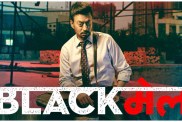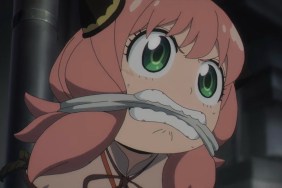Masatoshi Nagase as Munezo Katagiri
Takako Matsu as Kie
Hidetaka Yoshioka as Samon Shimada
Yukiyoshi Ozawa as Yaichiro Hazama
Tomoko Tabata as Shino
Reiko Takashima as Yaichiro’s wife
Sachiko Mitsumoto as Kie’s mother-in-law
Kunie Tanaka
Chieko Baisho as Munezo’s mother
Min Tanaka as Kansai Toda
Nenji Kobayashi
Ken Ogata as Shogen Hori (chief retainer)
Directed by Yoji Yamada
Summary:
For his second period film, Yoji Yamada again redefines the words “cinematic perfection” with a film that looks and feels like a true classic.
Story:
Munezo Katagiri (Masatoshi Nagase) is an older samurai who hasn’t seen any combat in his lifetime, but times are changing in feudal Japan, and Western technology is starting to infiltrate the age-old samurai traditions. When a former classmate escapes from prison, Katagiri is assigned the task of stopping and killing him, though Katagari also is worried about his family’s former maid Kie (Takako Matsu), who left to marry into an abusive situation, while keeping his love for the pretty young woman hidden.
Analysis:
The samurai genre is one that has had its ups and downs without ever achieving the cinematic heights of Akira Kurosawa’s films of the ’50s and ’60s. Their influence is still felt in the work of those trying to revive the genre like Quentin Tarantino and Tom Cruise, but there’s always been something missing.
Yoji Yamada’s The Twilight Samurai was a breath of fresh air, not only because it was the first attempt at a period piece by a highly experience Japanese director, but also because it focused more on the characters and the personalities than the sword fights. As “perfect” as “Twilight Samurai” was, Yamada’s thematic follow-up “The Hidden Blade” is even better, mainly because it adds a love story to the mix, while continuing its themes of evolution and change and how it affected the traditional Japanese lifestyle during the mid-19th Century. It’s no surprise that, like “Twilight Samurai,” it was adapted from a classic novel written by Shuhei Fujisawa.
Katagiri’s family has lived in poverty ever since his father committed suicide over a clerical error, and he’s become fodder for the local samurai gossip circles because of his involvement with his family’s maid Kie. She left to get married years earlier, but when Katagiri learns that her husband’s family is working her to the point of exhaustion, he “rescues” her from the situation. For years, Kie has had an obvious crush on Katagiri, and he has mutual feelings, but because of the class system, they’re unable to consummate their unfulfilling relationship.
For the most part, the story unfolds like a novel, slowly paging through the various subplots in a way that makes it hard to define traditional movie “acts.” The love story is more of a framing device for a number of interlocking elements, which form a cross-section of what life must have been like for low-level samurais during that time, as they tried to accept Western ways into their traditional lives. This aspect of the story allows for some hearty comic relief in the form of a frustrated young teacher from the city trying to teach these rascally old dogs a few new tricks with very little luck.
Anyone expecting non-stop sword battles may be slightly disappointed though. Unlike Toshiro Mifune’s tableau of characters, Katagiri prides himself on never having had to draw his blade or kill a man, but ultimately, this will lead to a confrontation with his old classmate Hazama. The two were at the top of their sword fighting class, and though Hazama won the last match-up between them, their master decided to teach Katagari the secrets of his killing stoke. Hazama is leaving village when the film starts, but halfway through, he returns, imprisoned as a homicidal traitor, and having gone quite mad. When Hazama escapes, Katagiri is given the chance by the chief retainer to save his family’s name and honor by taking on his former classmate, accompanied by a group of armed guards, a bit like a samurai SWAT team, as it were. (This leads to another intriguing subplot involving Hazama’s wife giving herself to the chief retainer in exchange for her husband’s life.)
This is an absolutely gorgeous film with a deliberately subdued tone, but the attention Yamada pays to detail in recreating the era, from the dialogue to the clothing and the look of the village really makes you feel as if you’re watching a living snapshot of how it must have felt to live in those times. There’s an epic scale to the film without cheating by having tons of huge set pieces or the vast landscapes often associated with epics. With few exceptions, most of the scenes only involve two or three characters “on stage,” yet it never suffers from the plodding pace that often plagues dialogue-heavy films.
Masatoshi Nagase’s performance is on a par with Hiroyuki Sanada’s in “Twilight Samurai,” but it’s really Takako Matsu who steals your heart as the beautiful Kei. She’s an absolute delight, radiating a heartwarming smile that makes it obvious of her feelings towards her master. The onscreen chemistry in the scenes between these two actors harks back to best films by Tracy and Hepburn, and it is likely to win over anyone who watches it.
Beyond that, the film is effective in the way that every part of the story layered to the point where even the movie’s title might be interpreted in different ways by the end. Still, there’s also a simplicity to how Yamada lets things unfold, which allows you to just sit back and enjoy it on a base level right up until the highly satisfying conclusion.
The Bottom Line:
From the first frame until the last, this is one of those rare moments of perfection in filmmaking. Anyone interested in this fascinating time in Japanese history, either from watching Kurosawa’s films or Tom Cruise’s “Last Samurai,” will want to see the latest masterpiece from a Japanese director who has attained a level of filmmaking achievement rarely seen in this day and age.










